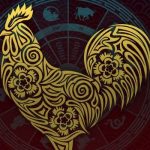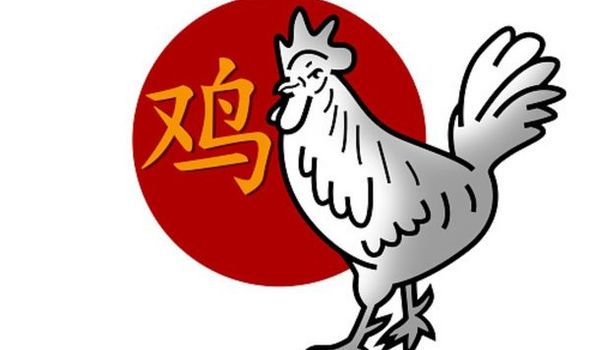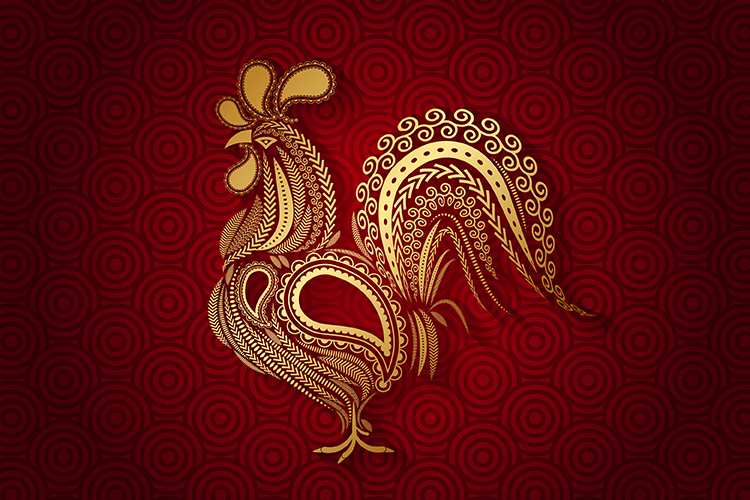
 There are several legends and stories about the animals chosen to make up the Chinese astrological system. One of these legends refers to the intention of the Jade Emperor to know the animals that inhabited the Earth. He decided that some of them should be brought before him. To facilitate the selection, the Emperor defined two criteria: they would have to be valuable animals for Man or be one of the first to arrive at the Celestial Palace on the day of the election of the animals.
At the beginning of time, the Rooster was an aggressive and violent animal. When the Emperor was choosing animal signs, the Rooster was not considered a candidate. Annoyed, he asked Caballo how he had been chosen.
The Horse replied that the Man had suggested that he pay for his services by plowing the Land and fighting the war. The Rooster confessed that he, too, would like to be a sign. The Horse replied that it was simple: it was enough to prove its usefulness to humans. "Everyone else does - the Ox plows the Earth, the Pig supplies the meat, the Dragon controls the rain. You have a wonderful voice; why don't you use it?"
The Rooster thought about his friend's words and made a decision. He started using his voice to wake people up in the morning to avoid being late for work. Touched, the people asked the Jade Emperor to consider the Rooster in the competition. Although flying animals were forbidden to participate in the selection, the Emperor made an exception. During the great race, the Dog and the Rooster advanced side by side until, as they approached the finish line, the Rooster flew to arrive before the Dog and win the place of the tenth sign.
There are several legends and stories about the animals chosen to make up the Chinese astrological system. One of these legends refers to the intention of the Jade Emperor to know the animals that inhabited the Earth. He decided that some of them should be brought before him. To facilitate the selection, the Emperor defined two criteria: they would have to be valuable animals for Man or be one of the first to arrive at the Celestial Palace on the day of the election of the animals.
At the beginning of time, the Rooster was an aggressive and violent animal. When the Emperor was choosing animal signs, the Rooster was not considered a candidate. Annoyed, he asked Caballo how he had been chosen.
The Horse replied that the Man had suggested that he pay for his services by plowing the Land and fighting the war. The Rooster confessed that he, too, would like to be a sign. The Horse replied that it was simple: it was enough to prove its usefulness to humans. "Everyone else does - the Ox plows the Earth, the Pig supplies the meat, the Dragon controls the rain. You have a wonderful voice; why don't you use it?"
The Rooster thought about his friend's words and made a decision. He started using his voice to wake people up in the morning to avoid being late for work. Touched, the people asked the Jade Emperor to consider the Rooster in the competition. Although flying animals were forbidden to participate in the selection, the Emperor made an exception. During the great race, the Dog and the Rooster advanced side by side until, as they approached the finish line, the Rooster flew to arrive before the Dog and win the place of the tenth sign.
 In the Chinese Astrological system, each sign of the Zodiac is associated with one of the five elements: Wood, Fire, Earth, Metal, and Water. The characteristics of a person's personality are influenced by various influences, including the sign and element of the year of birth. For example, a Wood Rooster appears once in the 60-year cycle. Thus, there are five types of Roosters, each with its own characteristics:
In the Chinese Astrological system, each sign of the Zodiac is associated with one of the five elements: Wood, Fire, Earth, Metal, and Water. The characteristics of a person's personality are influenced by various influences, including the sign and element of the year of birth. For example, a Wood Rooster appears once in the 60-year cycle. Thus, there are five types of Roosters, each with its own characteristics: